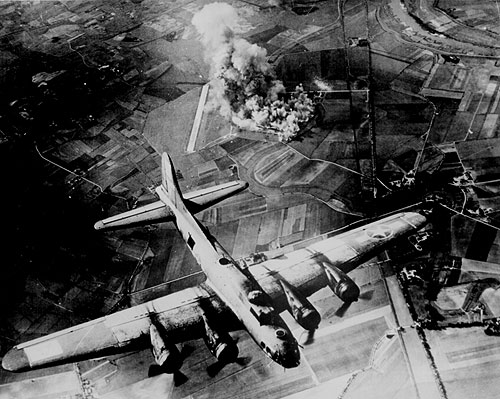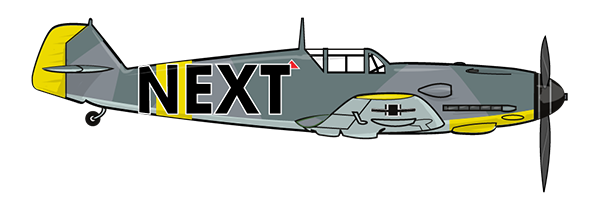
Allied air attacks resumed their usual punishing routine, but by the spring of 1944 a change was in the wind. The Allies began to focus their attacks on airfields and railways in France, which was not a strategy the occupied French people where particularly enthusiastic about. The USAAF's goal was to forestall any potential German response to the upcoming invasion of the continent. It was at this time that Allied air power would make the plane-hating Rommel miserable on a personal level, when the car carrying him from a meeting with Hitler (in which he attempted to impress upon Hitler the importance of stationing tank units close to potential Allied invasion sites because of the impossibility of moving vehicles to the front due to Allied air superiority making travel on the roads dangerous), was ironically strafed into a ditch by a Spitfire. Four days later, someone did, indeed, try to blow up Hitler. They failed to kill him, although they did succeed in making him even more irritable than usual, and he promptly ordered all of the conspirators rounded up, along with a lot of other people he didn't like, and had them all shot. Rommel was implicated in the plot, and given a choice between a firing squad or suicide, which is lot like most Americans feel during Presidential elections, only worse. He chose to shoot himself, although he was not on the phone to his girlfriend at the time.
The invasion succeeded, owing to Allied air superiority (only two Luftwaffe planes strafed the beaches on D-day, which is a victory for the power of positive thinking, if nothing else) and a clever camouflage deception involving lots of inflatable tanks and planes. Hitler was so convinced that the landings in Normandy were just a diversionary raid prior to a real attack that he refused to release his armored reserves until it was too late to stop the invasion. This was partly because of a phony arms build-up staged in England using dummy tanks, barges, and wireless traffic, and partly because Hitler was just a bit thick. It is uncertain now what happened to all of the rubber tanks and planes after the war. Presumably you can find them on ebay.
The Allied bombings over Germany continued, and through a rather noisy process of trial and error the Allies finally hit upon the one target that the Germans feared they would: their oil industry. Since Germany could not depend upon oil from imports, German industry relied instead upon synthetic oil manufactured from the country's ample coal reserves. The Allies began targeting the factories and refineries involved in its production, along with the vital oil fields at Ploesti, and the Luftwaffe soon found itself grounded for lack of octane. U-boats sat idle in their pens, tanks attacks stalled, and nobody went anywhere in a hurry, at least not without a rubber hose. The German war machine ground to a halt.

Like a losing coach in the fourth quarter of the Superbowl, Hitler began to get creative. Every scientist with a crackpot idea for a war-winning superweapon found himself suddenly rolling in funding, and the Allies began to find themselves trapped in an almost comic book fight to the death with Dr. Doom and his Nazi Legions of Death. Rocket planes, ballistic missiles, super subs and giant tanks began to pour from the sci-fi weaponsmiths of the Third Reich...all to no avail. Most of the shiny new weapons just sat idle on the factory floor while some poor sap from purchasing vainly called all over town for a few gallons of gas. A few of the Nazi wonder weapons posed enough threat that the Allied bombers made a special trip to take out their research labs at Peenemunde, with some success, although the V-1 buzz bomb and V-2 rocket proved to be a persistent nuisance until the German forces were pushed out of France and out of range of Hitler's favorite target, London. The one weapon that really gave USAAF airmen the shivers, though, was the world's first operational jet fighter, the Messerschmitt Me262. Looking like a shark with an "I Love B-17's" bumper sticker on it, the Me262 was so fast it could simply ignore Allied fighters, and so heavily armed that no Allied bomber could hope to endure more than one attack by it. It's ultimate undoing was the vulnerability of German airfields to Allied fighter-bomber raids, where the jets could be caught low and slow in the pattern, and the lack of adequate fuel or experienced pilots to put the jets to good use. Worse, Hitler interfered here, too, insisting that the speedy fighter be used as a bomber, despite its obvious unsuitability for the job. No one tried to blow him up this time, but General Galland managed to argue with him about it long enough to get himself stationed back at the front. Hitler may have lost the war, but he never lost an argument.
In the end, it was left to Hitler to do what no one else was able to manage, and he finally assassinated himself on April 30, 1945. The new German leadership promptly surrendered, and the war in Europe came to close.







